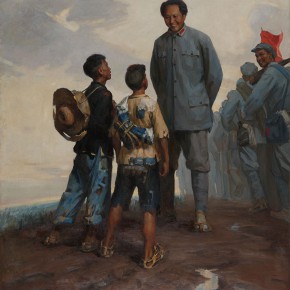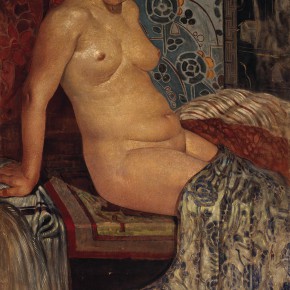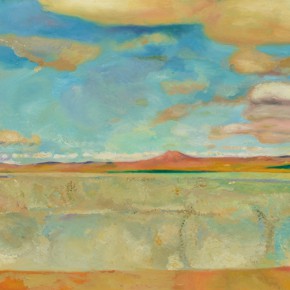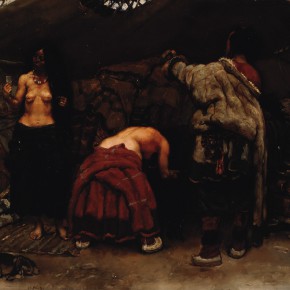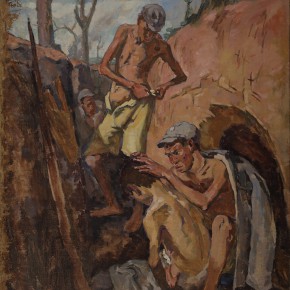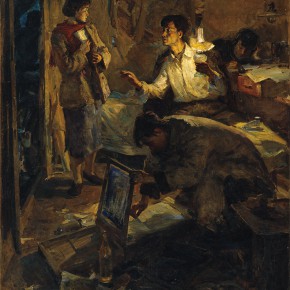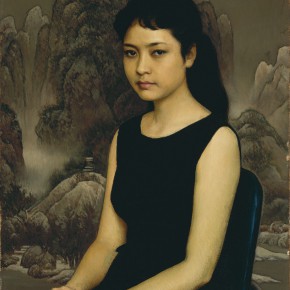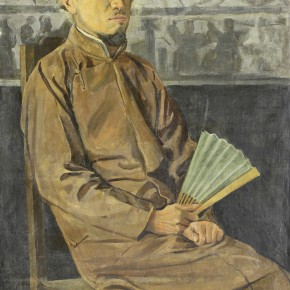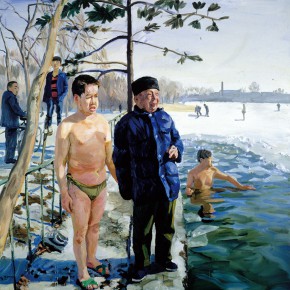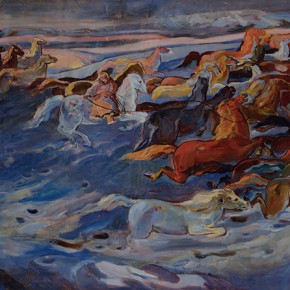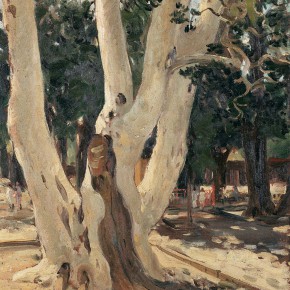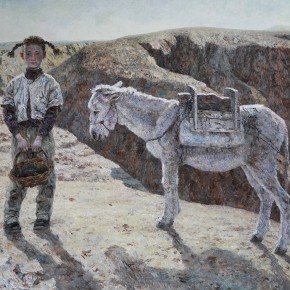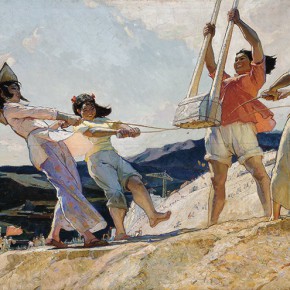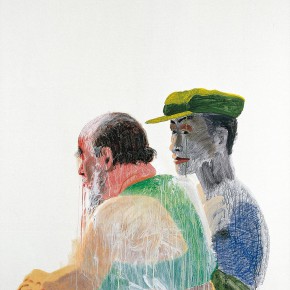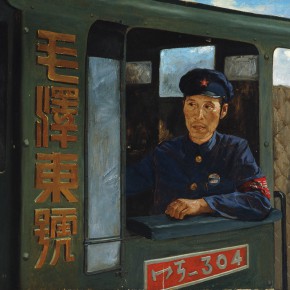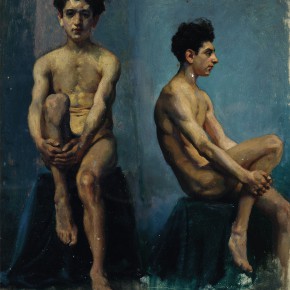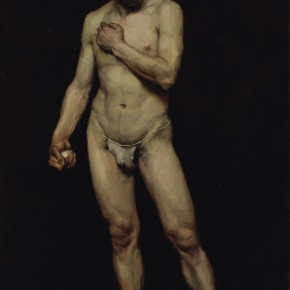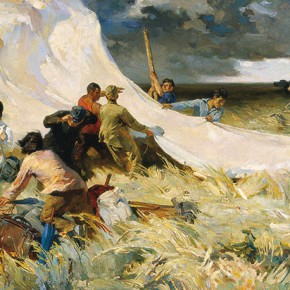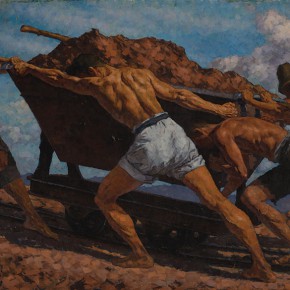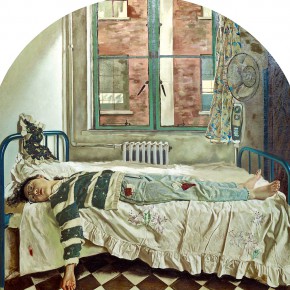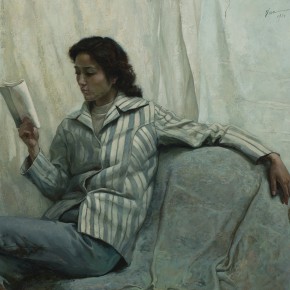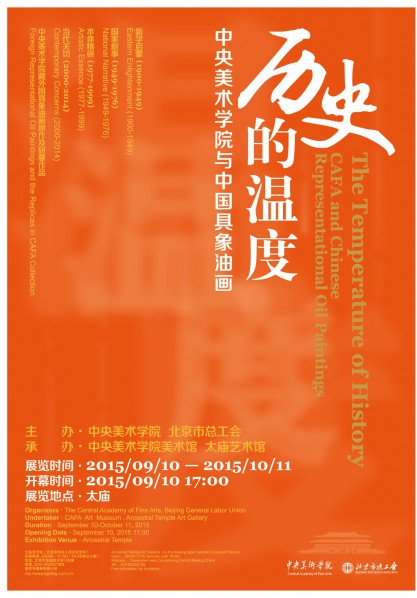
Since the “School’s Centennial Anniversary” project started in 2014, CAFA comprehensively and systematically has combed through the outstanding achievements of CAFA and its predecessor National Beiping Art School for the development history of Chinese art in the 20th century.
“The Temperature of History: CAFA and Chinese Representational Oil Paintings” reviews and reflects CAFA’s history of one hundred years from the perspective of oil painting. The exhibition aims to look at the study of the historical development, inheriting tradition, paying attention to the contemporary, looking to the future. Establishing the historical position of CAFA that promoted the development of Chinese art in the 20th century and established “CAFA School.”
The exhibition features a total of more than 200 works, mainly included in the representational paintings in the treasured collections of CAFA in the 20th century as the main body, in addition to the collections of the National Art Museum of China, Beijing Artists Association, Dadu Museum of Art, etc., as well as the private collections of the artists, artists’ families and collectors. The exhibition is themed “representational painting” instead of the common expressive way of “realistic painting”, the curator Prof. Yin Shuangxi explained: “During this new century, Chinese oil painting has rapidly developed, with various appearances, the traditional concept of 'realistic oil painting’ has been greatly extended, a variety of forms including symbolic, super realism, surrealist oil painting all of which appeared, bringing a new context and difficulty to the observation and study of Chinese oil painting, it is more inclusive and exploratory of the academic in using ‘representational painting’ to express.”
The exhibition is a systematic combing through of Chinese realistic oil painting in the 20th century, which is divided into five parts, including:
1 New Learning Enlightenment (1900-1949)
2 National Narrative (1949-1976)
3 Ontology Careful Study (1977-1999)
4 Contemporary Concern (2000-2014)
5 Original Works and Copies of Foreign Representational Paintings
1 “New Learning Enlightenment” starts from the old oil paintings in the late Qing and early Republic of China,and rare glass paintings, and there are more than 40 pieces of precious paintings during the period of the Republic of China, including: the “Portrait of a Half-Naked Women” by Li Shutong, who had studied in Japan, “Portrait of Chen Shizeng” and “Portrait of Wang Mengbai” by Li Yishi, who first returned to China after studying in the UK, “Portrait of Qi Woman” by Wu Fading, who first returned China after studying in France, as well as the selected works by many other important oil painters who had studied abroad in Europe and the United States in the early 20th century and taught in “National Beiping Art School”, the predecessor of CAFA, such as: Lin Fengmian, Wei Tianlin, Wang Linyi, Chang Shuhong, Xu Beihong, Wu Zuoren, Xiao Shufang, etc. In addition, it also presents the important works by the early oil painters such as Sun Zongwei, Qi Zhenqi, Ai Zhongxin, Li Zongjin, Feng Fasi. From where we can see the evolution trajectory of early Chinese oil painting when Western realistic oil painting met Chinese traditional culture and reality.
2 “National Narrative” showcases that CAFA actively promoted the socialist realistic art of the Chinese art since the People’s Republic of China was founded, especially using major national historical themes as the main body, to build the historical narrative and collective memory of new China. The national narrative does not only include the revolutionary historical theme, it also includes the shaping of an hero’s image, construction of socialist labor, daily life of ordinary people, etc., while oil painting was endowed with presenting the air of a grand country, shaping the national spirit. The exhibition presents the works by Hu Yichuan, Wang Shikuo, Dong Xiwen, Gao Hong, Hou Yimin, Zhan Jianjun, Sun Zixi, Xu Xingzi, Wei Qimei, Luo Gongliu, Li Tianxiang, Zhao Youping, Lin Gang, Pang Dao, Yu Yunjie, Du Jian, Wen Lipeng, Ma Changli, Yuan Yunsheng.
3 “Ontology Careful Study” features “A Young Woman Singer” of the young Peng Liyuan, created by Jin Shangyi in 1984, which was the representative work of the old president Jin, and one of the important works of “neoclassicism” in the early 1980s. This part also presents the works by Chen Danqing, Sun Jingbo, Chao Ge, Yang Feiyun, Wang Yidong, Sun Weimin, Ding Yilin, Shen Ling, Wang Yuping, Mao Yan, Chen Wenji, Ma Baozhong, Xia Junna, etc., these works reveal the political, economic, cultural reform and opening-up that play a role in the development of Chinese art from the new period.
4 “Contemporary Concern” does not only showcase the innovative works by the famous old professors of CAFA, such as Zhong Han, Lin Gang, Dai Shihe, but also the representative works by the middle-aged and young teachers from the Department of Oil Painting, Department of Mural Painting, Department of Printmaking, Department of Fundamental Education, such as Ma Lu, Su Xinping, Liu Xiaodong, Yu Hong, Zhang Lujiang, Lu Liang, in addition to the works by advanced students and graduates such as Xin Dongwang, Chen Shudong. These works have a diverse formal language and expressive skills, to showcase the broad cultural vision of contemporary painters, while it also maintains the profound humanistic care in contemporary society thus expressing the complex reality of contemporary China and the rich psychology of people.
5 “Original Works and Copies of Foreign Representational Paintings” reveal that Chinese oil painting directly faced the appreciation and copying of Western oil painting in the process of drawing lessons from the West in the last century, which has become the precious art experience of Chinese oil painters. Through the careful study and copy of classic art, teachers of CAFA gained precious visual feelings and technical experience of European classicism, French impressionism, the Soviet Union realistic painting and visual experiences which unconsciously influenced the teaching and creation of oil painting.
CAFA makes full use of the advantage of the talent of the team including associate research fellows, Ph.D students, graduate students and outstanding undergraduates, adding a large number of related important literature, background information and historical pictures closely around the more than 200 pieces of selected paintings, in order to convey more information to academia and the public.
The exhibition opens to the public from September 11 to October 11,
The audience can stroll in between the red walls and ancient pine trees of the Ancestral Temple to appreciate the unique charm of Chinese oil paintings, feel the pulse of the times and historical heart. The traditional atmosphere, modern inheritance, language of oil painting and traditional Chinese aesthetic are integrated, which does not only make the exhibition a unique art journey but also allows the audience to perfectly experience the valuable historical temperature. The organizer says that the exhibition will also be moved to art museums in many major cities.
About the exhibition
Title: “The Temperature of History: CAFA and Chinese Representational Oil Paintings” opening at the Ancestral Temple Art Gallery
Organizers: The Central Academy of Fine Arts, Beijing General Labor Union
Undertakers: CAFA Art Museum, Ancestral Temple Art Gallery
Duration: September 10 – October 11, 2015
Opening: September 10, 2015 17:00
Courtesy of the artists and the Central Academy of Fine Arts, translated by Chen Peihua and edited by Sue/CAFA ART INFO




